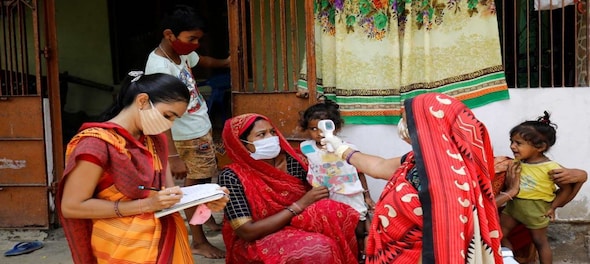
As the second COVID-19 wave begins to ebb, there is some breather for the nation. Whichever we look at it, the ferocity with which infections spread beginning early April was unexpected, and it spared no one regardless of region, age or class. Our health care system was overwhelmed as would have been the case with any other country. Despite the daunting task on hand, our doctors and all health care workers have worked tirelessly in saving lives and the country will never forget their dedication, often at great personal risk.
While much as been written on the social, economic and health impact of the second wave, the human distress in rural India has been more severe this time due to widespread infections and inadequate health care. Businesses that operate in remote areas have reported many anecdotal episodes of illness and loss of human life. The non-agricultural sector in rural India (which in GPD terms is larger than agriculture) consisting mainly of construction, trade, transport and education suffered a greater loss on account of lockdowns and supply disruptions. Income losses are unlikely to be made up for this group, particularly for daily wage earners.
On the other hand a couple of redeeming factors were; no hard lockdown and learnings of earlier experience. Movement of people was allowed thereby preventing hardship to migrant labour. On the agriculture front, harvesting of Rabi crop was conducted quite smoothly resulting in record wheat procurement. The upcoming Kharif season has fortunately coincided with a sharp reduction in fresh infections, and the input supply chain is geared to meet the requirements for sowing. Therefore in terms of agriculture production, no negative impact is expected.
The sentiment at the household level is however subdued on account of loss of income and in some cases loss of loved ones. Fear of a third wave will also impact spending on FMCG products and consumer durables. At the same time, as rural folks begin to reconstruct their lives there are a few bright spots that will help them through this difficult period. MGNREGA has been a saviour for landless labour and government spending needs to be sustained or even enhanced. Agri commodity prices have been stable, instances of distress selling are few and exports have provided further support. The outlook for the coming monsoon is positive.
Central and State governments too can pitch in lifting the morale by undertaking three steps. Firstly as soon as the supply situation on vaccines ease, focus on inoculating rural India. They need it first. Secondly, start stockpiling oxygen and essential medicines at the primary health centre and to reassure rural people that the government is adequately prepared. Thirdly, aggressively restart rural road, rural housing and highway construction, as that has a high employment potential.
In conclusion, the agriculture sector is expected to be least impacted in the context of the Indian Economy. It is the non-agri rural sector that needs a helping hand from the government and corporate sector. Most importantly we cannot afford to let our guard down, and must be prepared for the third wave, should it hit us. In parallel, let us work and build an ecosystem that the third wave is prevented.
—Ajay S Shriram is chairman and senior managing director of DCM Shriram Ltd. Views expressed are personal.
(Edited by : Ajay Vaishnav)
Check out our in-depth Market Coverage, Business News & get real-time Stock Market Updates on CNBC-TV18. Also, Watch our channels CNBC-TV18, CNBC Awaaz and CNBC Bajar Live on-the-go!


Lok Sabha elections 2024: Baramati to Mainpuri, key battles in phase 3
Apr 30, 2024 7:01 PM
From Amethi to Mumbai South — Lok Sabha seats where parties are yet to announce candidates
Apr 30, 2024 6:39 PM
Diamond rings, fridge, TVs: Bhopal voters to get exciting prizes to boost turnout in Lok Sabha polls
Apr 30, 2024 6:35 PM
This Bihar district has its own app to help voters during Lok Sabha election
Apr 30, 2024 4:02 PM

